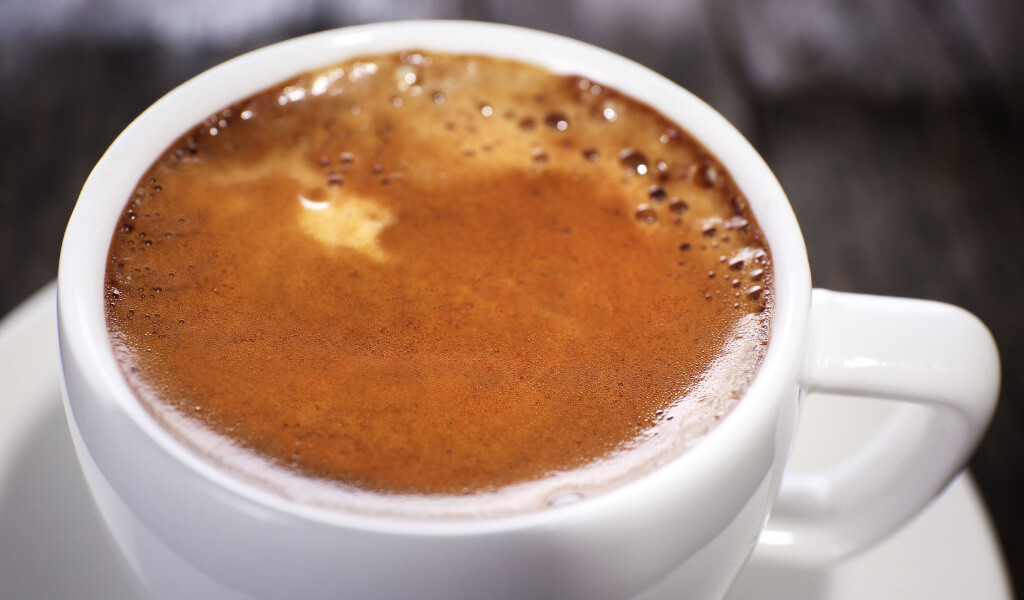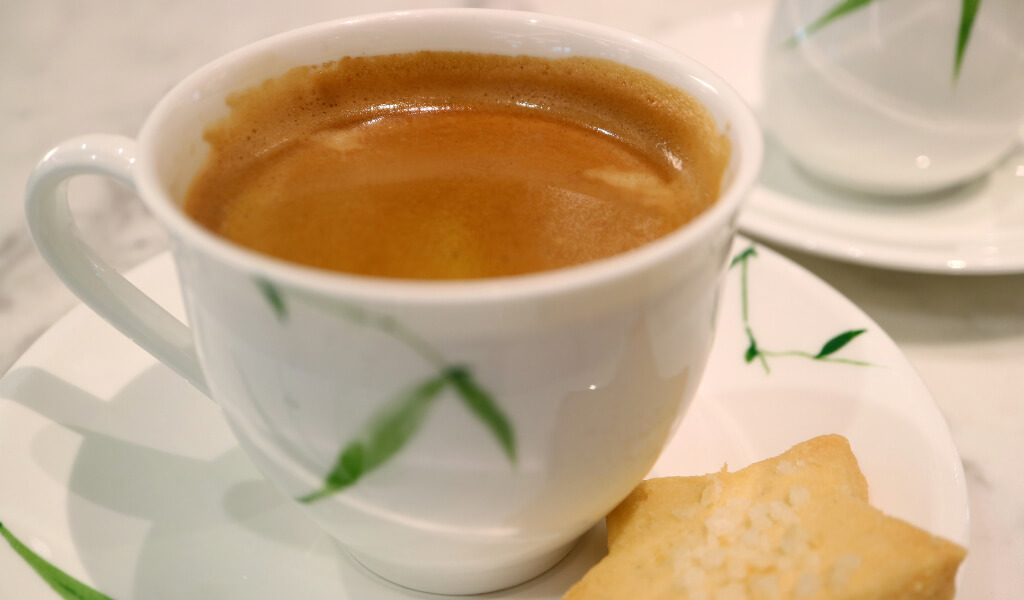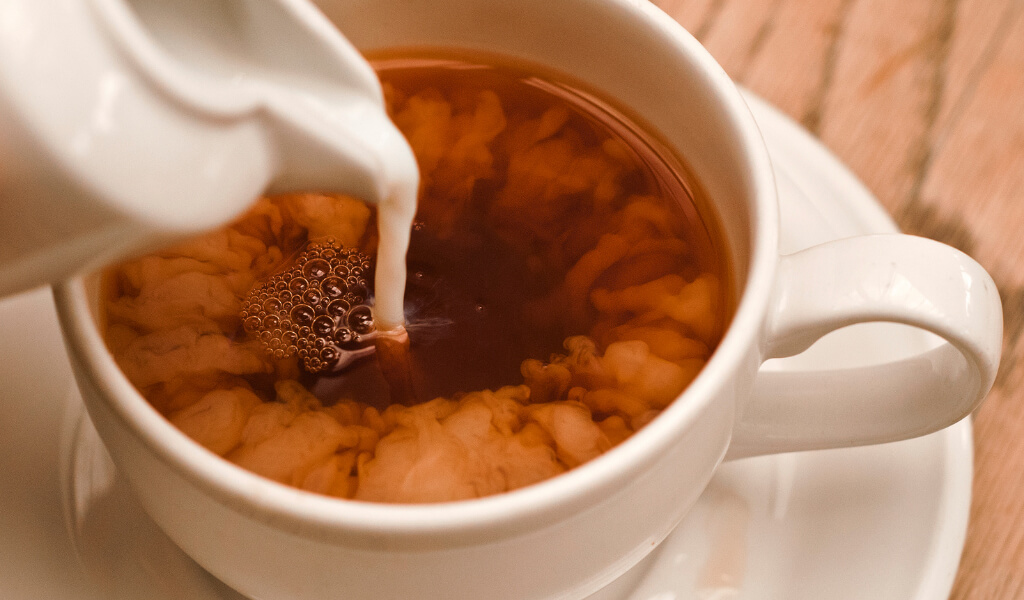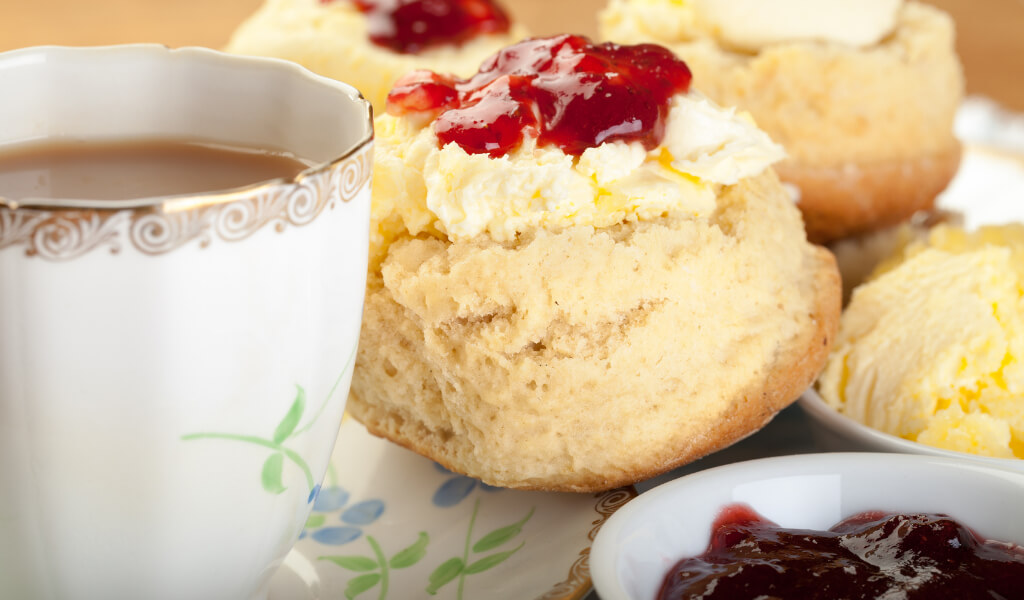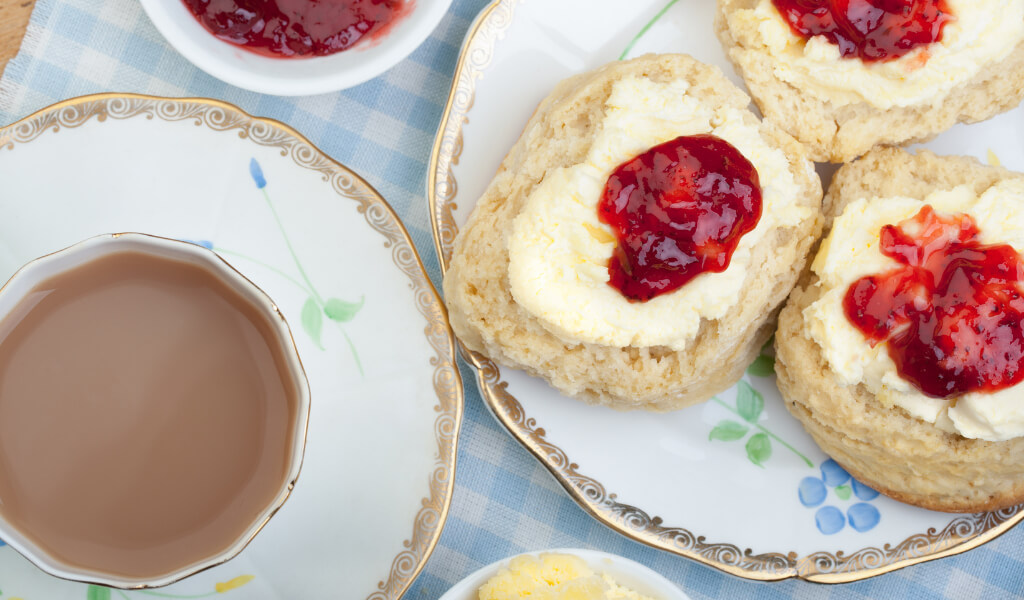Good morning tea enthusiasts! Have you ever wondered, can you put Cream in Tea?
I’ve explored various ways to enhance my tea experience and cream in tea is a topic that’s certainly piqued my interest. It might surprise you to know that the concept of adding cream or milk to tea isn’t new at all.
If you’re American, you might be fine with 2% milk in your tea, but whole milk is a game-changer. It’s not about snobbery, it’s about the rich creaminess it brings, making your tea fuller and more delicious. Skim milk? No, just no.
This discussion is not just about whole milk, though. We’re delving into cream in tea, a topic with its own fascinating insights.
Can you put cream in tea instead of milk?
You can put cream in your tea; there’s more to it than just creating a rich, creamy texture. As we tea lovers know, tea can sometimes be bitter, right? This bitter taste could be over-steeping, or you’ve chosen a naturally bitter tea rich in tannins. Now, here’s where the magic of cream comes into play.
Lactose in milk or cream acts as a tea superhero, taming bitterness and calming tannins for a smoother, tastier brew. If your tea feels too bitter, try a splash of cream!
Why do the British put milk in their tea?
The answer is that in the 17th and 18th centuries, porcelain tea cups were so delicate that they would crack from the heat of the tea. Milk is added to cool the liquid and prevent the cup from breaking.
Do Americans put cream in their tea?
As far as I know, no. We usually add some milk, though. Some people have health issues with milk, so they have to substitute something like almond milk, but no one uses cream to thicken a good tea.
Do the British add cream to their tea?
Clotted cream, an afternoon tea (or cream with tea) custom, is a thick, unsweetened cream from the finest cows in Devon, served on top of English scones.
Can you put cream in your tea instead of milk?
Yes, you can use the best cream for tea instead of milk, but the intriguing history and practical reasons behind using milk in tea and cream are worth noting.
Now, pour yourself a cup of Earl Grey tea or a cappuccino if that’s your preference, and let’s delve into this fascinating story.
While the British, famous for their afternoon tea, are often credited with introducing milk to tea in 1660, there are suggestions that this practice may have originated in China and Tibet, the tea’s birthplaces, even earlier.
Interestingly, the primary purpose of adding milk to tea wasn’t to enhance flavor.
It was a practical measure to prevent the hot tea from cracking the delicate porcelain teacups – the type often seen at royal tea parties.
Yes, that’s right. The milk was added first to moderate the temperature of the tea and prevent any shocking temperature changes that could lead to a disastrous cracked teacup scenario.
And here’s another tidbit – those tannins in black tea, often enjoyed with a scone and jam in a traditional Devon or Cornish tea setting, can also stain your lovely porcelain or glass tea cups over time. This is where milk rescues again, offsetting the tannins and reducing the yellowing of your lovely teaware.
Now, let’s talk about how adding milk to tea had historical class connotations. In the past, tea was a luxury enjoyed mainly by the upper classes, while milk was easily accessible to everyone. This led to an interesting social cue: those who added a dash of tea to their mostly milk-filled cups were often perceived as more privileged than those who could afford to do the reverse.
These days, though, we add cream or milk to our tea for a simple reason – taste. Remember those tannins we talked about? Thanks to their lactose content, both cream and milk can offset the bitter taste and neutralize the tannins, giving you a smooth, delicious cup of tea.
In my research journey for this post, I stumbled upon these delightful facts and more. I even found out that cream pairs well with certain types of tea like matcha, a green tea powder from Japan, and you can even find unique flavors like tea ice cream or bubble tea with milk out there! Got more questions or anything to add? Don’t hesitate to drop a comment.
Read More:
- Is It Okay to eat Fresh Tea Leaves?
- How to Reuse Tea Bags
- How many tea bags for a gallon of tea? Sweet, Iced and Sun tea
- How long does tea last?
- What is in tea? Unlocking the Secrets of Tea
Best Tea with Cream
Here are my top two recommendations:
Darjeeling Black Tea
I first discovered the joy of pairing Darjeeling Black Tea with cream one cold December afternoon in London.
It was at a small, cozy tea shop in Covent Garden. The light yet complex flavors of this black tea, often dubbed the “champagne of teas”, become rich and full-bodied when paired with a dollop of cream. The cream highlights the tea’s inherent muscatel notes, adding a layer of hard-to-resist decadence.
Earl Grey Tea
My second recommendation would be Earl Grey tea. I remember a summer trip to Devon a few years ago where I had the opportunity to savor this fragrant tea with cream. The citrusy notes from the bergamot in Earl Grey blend harmoniously with cream, producing a smooth, soft, and refreshing beverage. The cream cuts through the zesty bergamot, creating a balanced cup of tea that’s both soothing and refreshing.
Thanks from Spiriteadrinks
FAQs
Can you put cream in black tea?
You can put cream in black tea. According to that, in a saucepan, bring tea and sugar to a boil. Cool down. Pour 1/2 cup tea over broken ice in 8 glasses, then add 1 tablespoon cream to each glass to serve.
Can you put cream in green tea?
Yes, the cream can be added to green tea, though it’s less common. Green tea’s light, grassy flavor can be nicely balanced by the richness of the cream, providing a unique and indulgent tea experience.
Is tea better with milk or cream?
Some teas are improved by adding a splash of milk (not cream because it hides the flavor of the distinctive brew) or a sprinkle of sugar. Green tea is a more delicate brew that is best enjoyed with sugar rather than milk, which can overpower stronger teas like black tea.
Do the British put cream in their tea?
Traditionally, the British don’t put cream in their tea, and they use milk. The use of cream is more common in other parts of Europe and North America.
What kind of cream goes in tea?
Choose an infusion liquid that you would typically add to your tea, such as milk, cream, half-and-half, almond milk, or coconut milk, among other options. However, to spare yourself a ton of aggravation, we strongly advise using heavy whipping cream for making whipped cream.
Do you put cream in tea first?
Whether you put cream in tea first or last depends on personal preference. Some believe adding cream first helps prevent the hot tea from cracking the delicate teacup, while others prefer to add it last to adjust the tea’s creaminess to taste.
How do you serve tea with cream?
To serve tea with cream, first pour the tea into a cup, then add a dollop of cream. Stir gently to blend the flavors. Remember to adjust the amount of cream according to taste.
Why does cream curdle in tea?
Cream curdles in tea due to heat and acidity. Tea is naturally acidic, and when combined with heat, it can cause the proteins in the cream to curdle. To avoid this, ensure your tea isn’t too hot when you add the cream.
Is curdled cream safe to drink?
While it might not look appealing, curdled cream in tea is safe to drink. The curdling is just the proteins in the cream reacting to the acidity and heat of the tea.
How do you make the cream, not curdle in tea?
To prevent the cream from curdling in the tea, ensure the tea is not too hot when adding the cream. Also, adding the cream and slowly pouring in the tea can help prevent curdling.
Can you add coffee creamer to tea?
Yes, you can add coffee creamer to tea. Coffee creamer can provide a rich, sweet flavor to your tea, similar to cream or milk, but with added flavors, depending on the type of creamer you choose.
Is it better to add sugar to tea before or after adding cream?
Whether you add sugar before or after the cream in your tea depends on personal preference. Some people prefer to add sugar first so it dissolves in the hot tea, while others add it after the cream to adjust the sweetness to taste.
Which is better: scones with jam first or cream first?
The debate about whether to put jam or cream first on scones is a classic one. In Devon, they put cream first, then jam, whereas in Cornwall, it’s jam first, then cream. Both ways are delicious, so it’s entirely up to personal preference!
What’s the best way to serve tea with scones?
The best way to serve tea with scones is to have a pot of hot tea, fresh scones, clotted cream, and strawberry jam. You can choose to spread cream on your scone first and then jam, or vice versa, depending on whether you prefer the Devon or Cornish method.
Can I put coffee creamer in tea instead of milk?
Sure, you can use coffee creamer in tea instead of milk. Depending on the type of creamer used, it can offer a different flavor profile and sweetness level. It’s a matter of personal preference.
I’m Shanna, creator of Spiritea Drinks. I’m all about teaching people to grow their own food, tea, cook what they harvest, and eat with the seasons.


